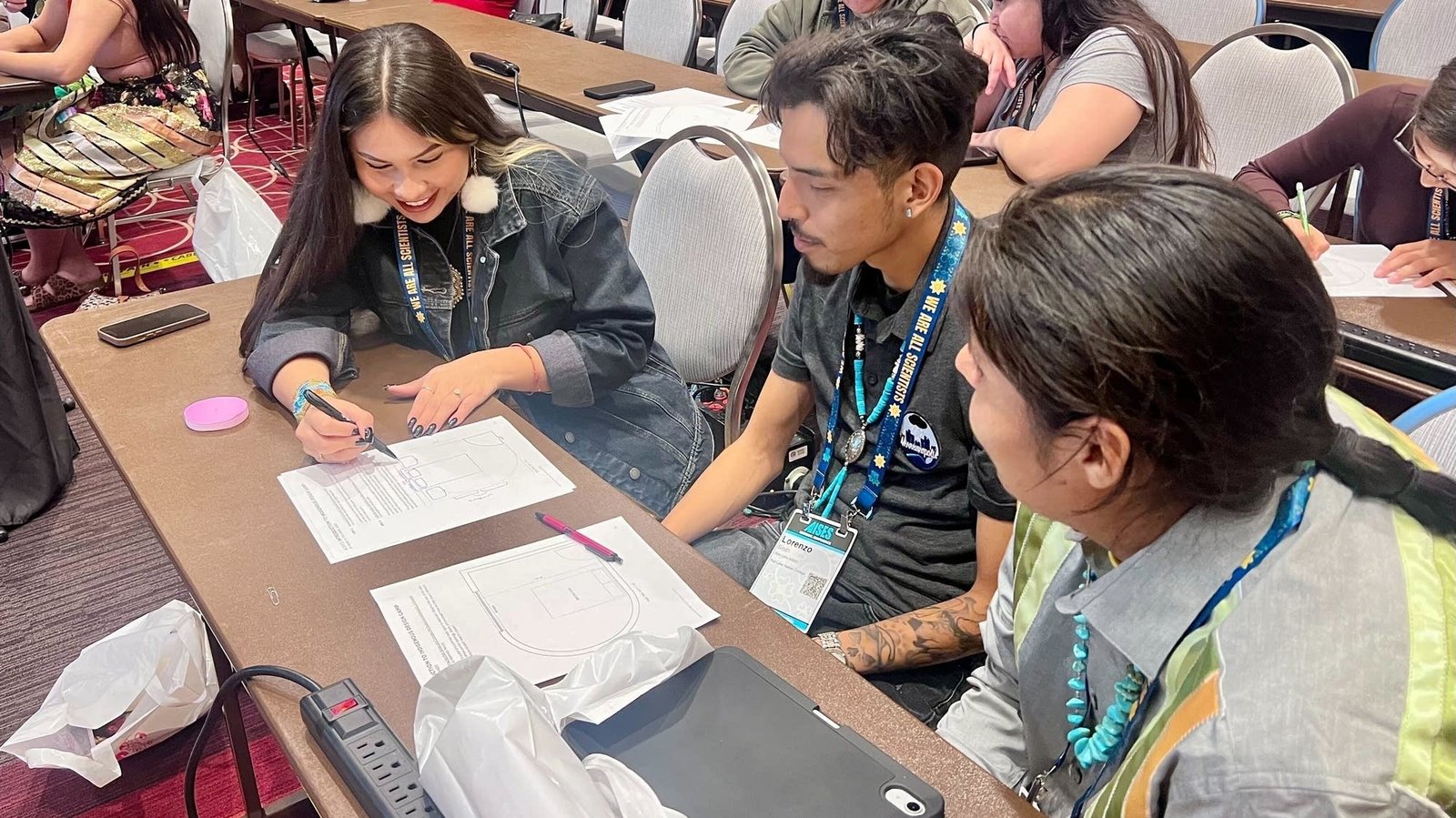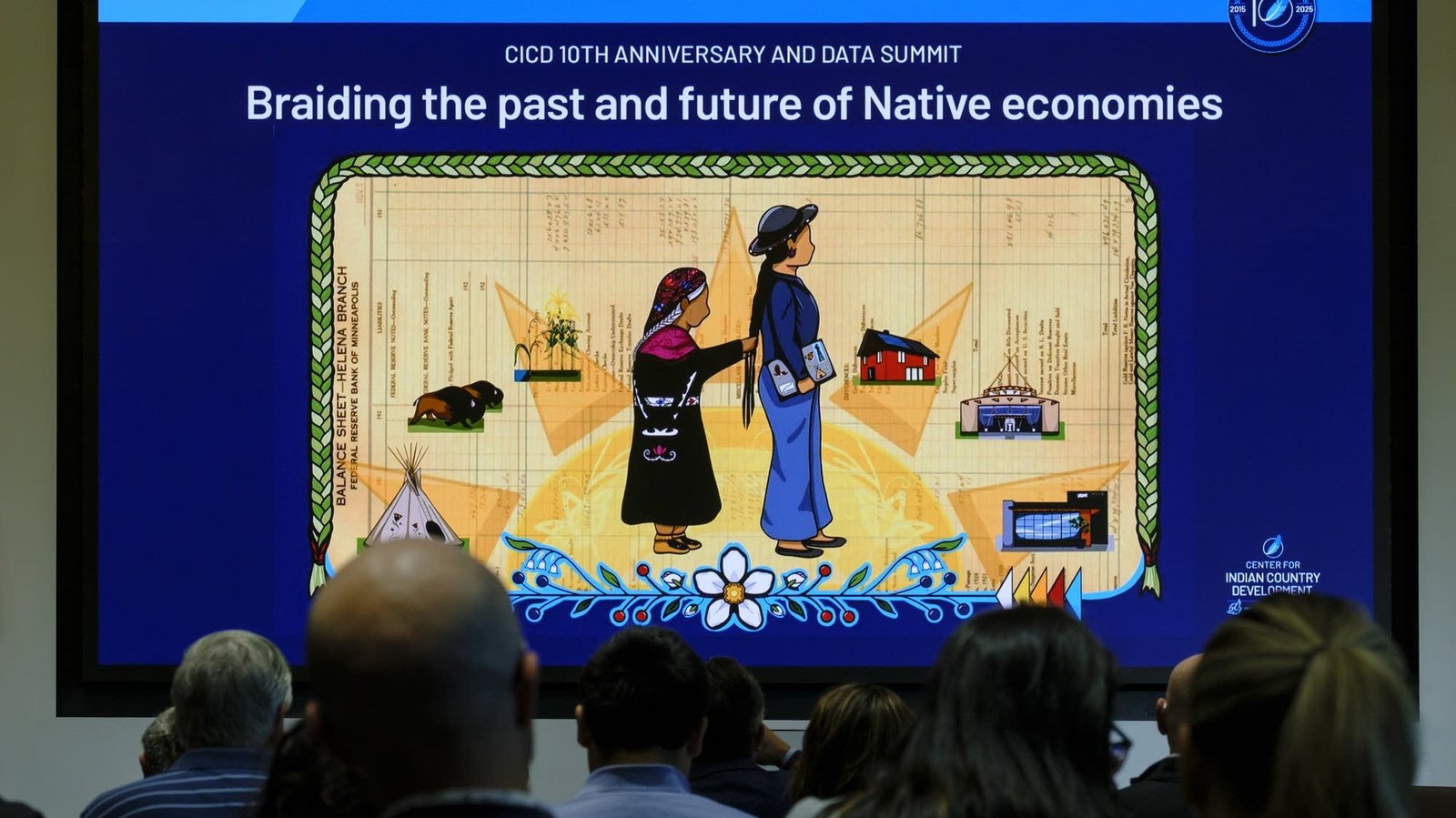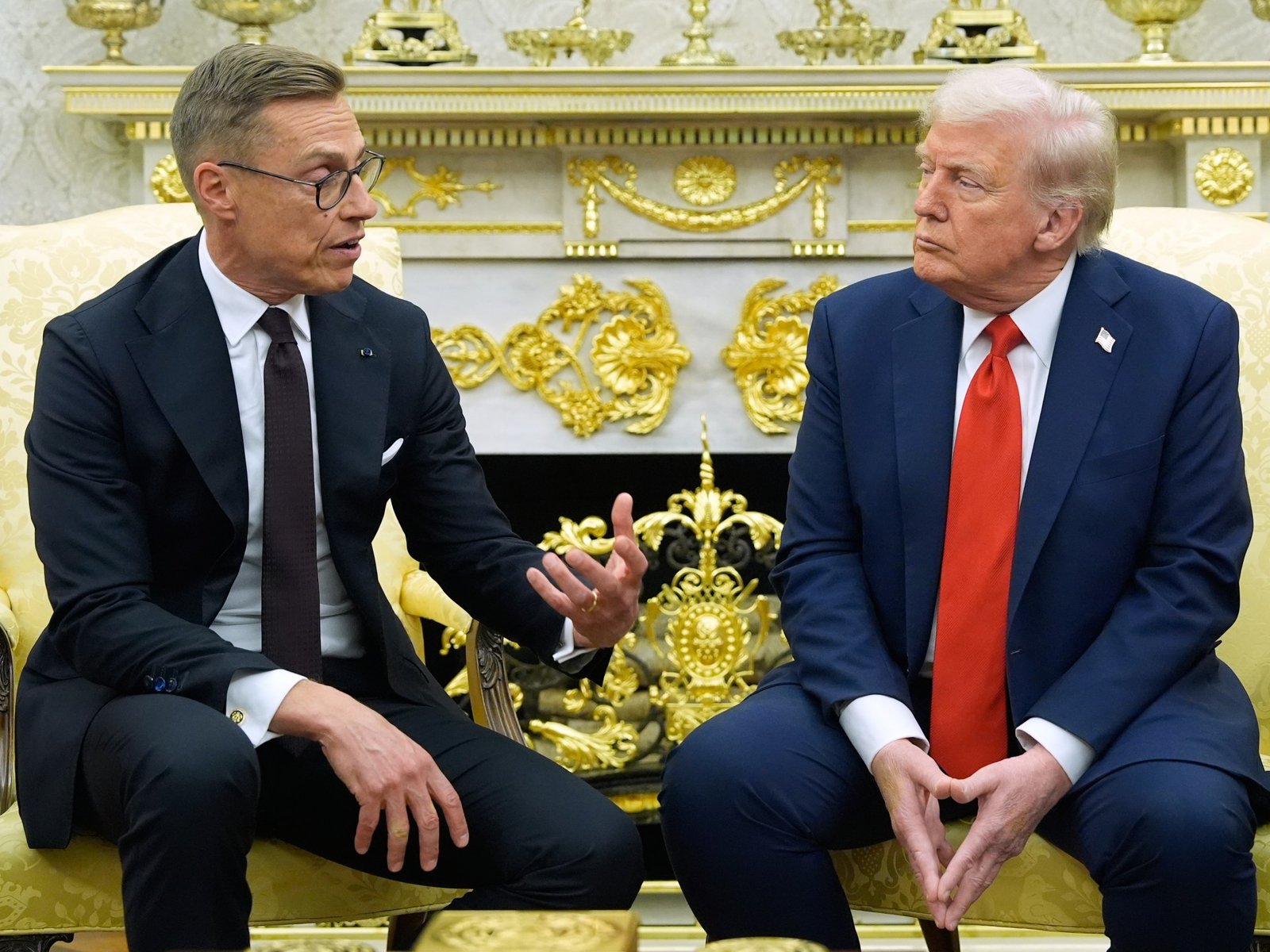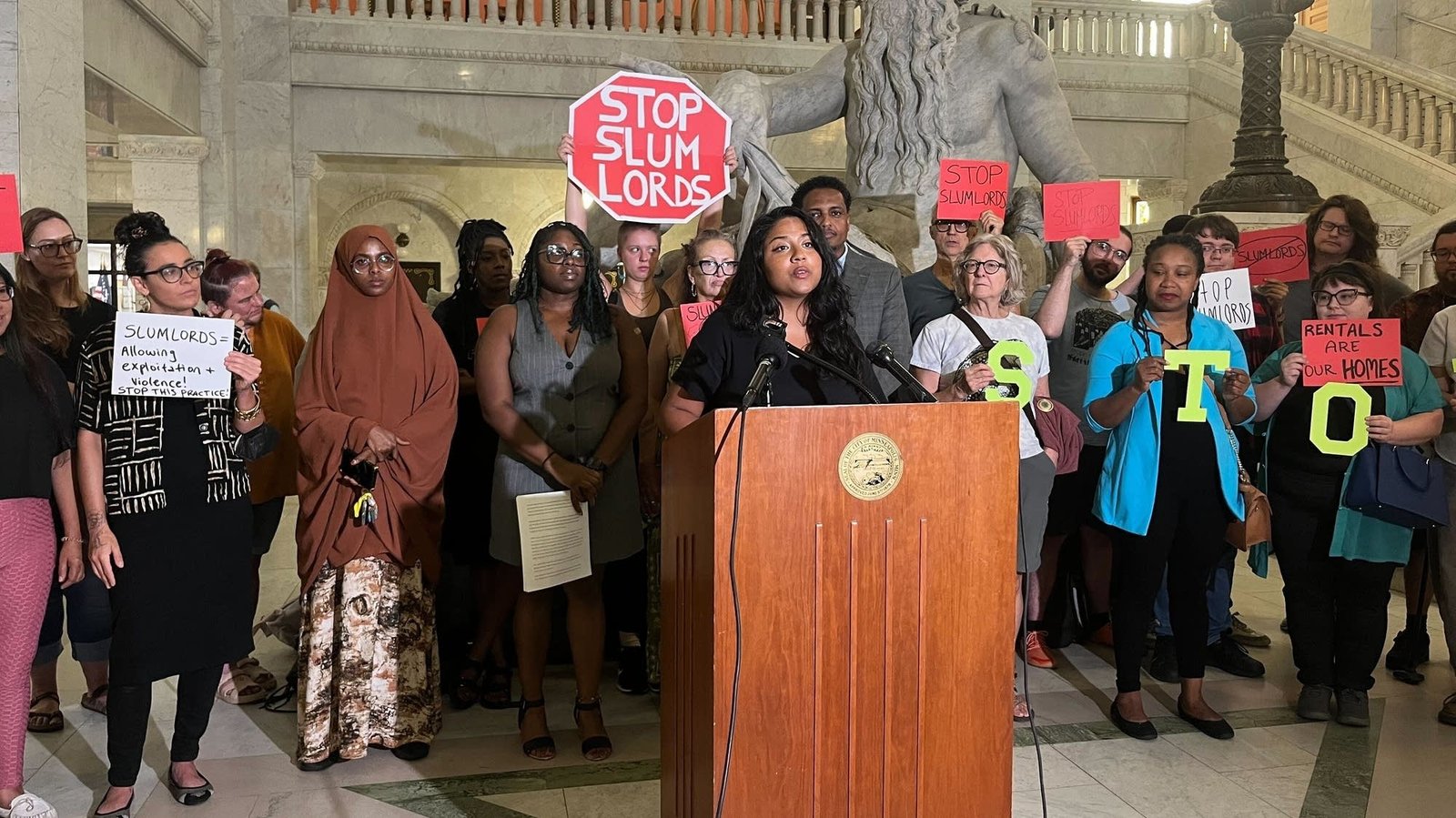Thousands of people gathered in early October at the Minneapolis Convention Center for the AISES 2025 National Conference. The American Indian Science and Engineering Society holds its national conference in different cities across the United States each year, bringing together Native professionals, educators and those interested in science, technology, engineering and math, or STEM, careers.
The conference was held over a course of three days at the convention center with hands-on learning sessions, lectures and networking opportunities.
South Minneapolis Native American youth center, MIGIZI Communications, highlighted their STEM programming through an informational session. Antavia Paredes-Beaulieu leads the organization’s Green Tech Program, which provides youth with experience in renewable and green energy fields.
“I love this space because it really normalizes to Native youth higher education and acknowledging that Indigenous folks are all scientists, and that they can see themselves in the future of tech,” Paredes-Beaulieu said.
MIGIZI leaders also highlighted programming where youth participants take care of sacred sites, such as those along the Minnesota River. Other programs highlighted were ones focused on technology and robotics. Youth involved with MIGIZI showcased robots they had made during the session, moving them around with a handheld controller.
Paredes-Beaulieu says the conference also helps alleviate feelings of isolation in the STEM field.
“They often are very moved because they feel seen and they feel understood. They feel recognized and they feel embraced, and they feel that who they are and all the things that come with who they are normalized in this space,” Paredes-Beaulieu said.
Sky Harper, a citizen of the Navajo Nation, is a senior U.S. national student representative with AISES. He says he first became involved with the nonprofit as a high school student over a decade ago. The conference helped to shape his interest in STEM.
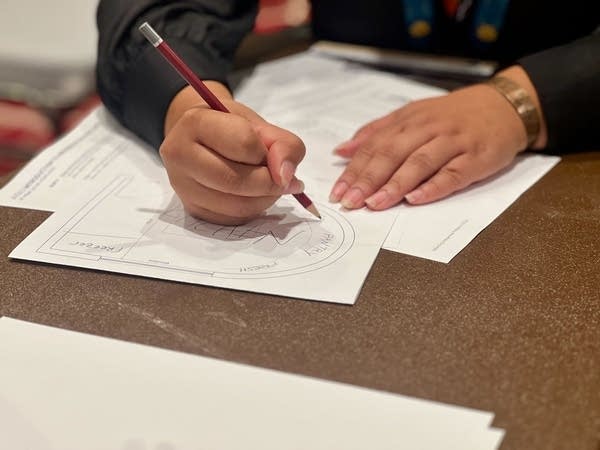
“As a student, just seeing people in the field doing work, seeing people who already are scientists, who are already doing amazing stuff — it's like, ‘Oh, I can do that. They did it. I can do that now,’” Harper said. He says the conferences are a welcoming environment to all, and the relationships formed through AISES feel like family.
“The energy is so positive,” he said.
‘Critical component of cultural identity’
Architects Michael Laverdure, Sam Olbekson and University of Minnesota’s College of Design assistant professor instructor Jessica Garcia Fritz co-hosted a hands-on session focusing on architecture with Indigenous influence.
With paper and pencils in hand, participants were instructed to design a room before getting together in a group to imagine a larger community space. They put their rooms together, like putting together pieces of a puzzle.
Ameliana Duran is a student at Red Lake Nation College in Minneapolis and plans to pursue architecture as a career. She says building design can have impacts on Indigenous communities.
“I think [it’s] really important to bring into the Native community, so that they can feel inspired when they go into something new that's for them, so that they can feel creative enough to do other things,” Duran said.
Laverdure says the session was a shortened two-hour version of a week-long Indigenous Design Camp held in the Twin Cities metro over the summer for youth.
“It gives you exposure to what you would experience in an architecture school. So, we start out by giving them the background of what architecture is, and we talk about what careers in architecture is, and we expose them to those things and design theory,” Laverdure said.
He says the Indigenous Design Camp has been held twice now. He hopes to expand its capacity and reach in the future, and AISES is one of those opportunities.
“There's not enough Native architects and designers out there that exist, and we want to create that environment that allows that to happen,” he said.
Laverdure has worked on several projects alongside Olbekson. Together, they've worked on the Minneapolis American Indian Center and Red Lake Nation College in Minneapolis, among several others in the state.
“Architecture is a way not only to create the spaces, and the infrastructure people need to thrive, but it also is a critical component of cultural identity and even sovereignty,” Olbekson said.
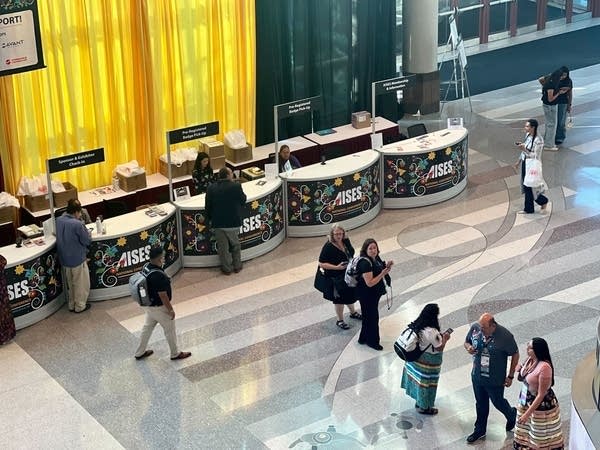
Laverdure says AISES exposes conference attendees to career pathways they may not have otherwise considered.
“If we get one of them to be an architect. That's going to be a success, because what will happen is that one person will design 50 buildings in their lifetimes, and those 50 buildings will improve life quality of so many tribes and so many tribal people,” Laverdure said.
‘Try something once’
During the hands-on session, Laverdure asked attendees to raise their hands if they thought math was critical to becoming an architect. More than half of the room raised their hands.
“A lot of people think, ‘Geez, I'm not very good at math,’” he said while speaking to attendees. “There's so many ways to get to becoming an architect.”
While knowing basic calculations is important for the job, Laverdure emphasizes math is not a barrier to entering the field.
For those who fear not being good at math and science, Harper says AISES doesn’t only look at those aspects of STEM; the conference encourages ways to think about how Indigenous identity and Indigenous philosophy are interwoven with math, science and technology.
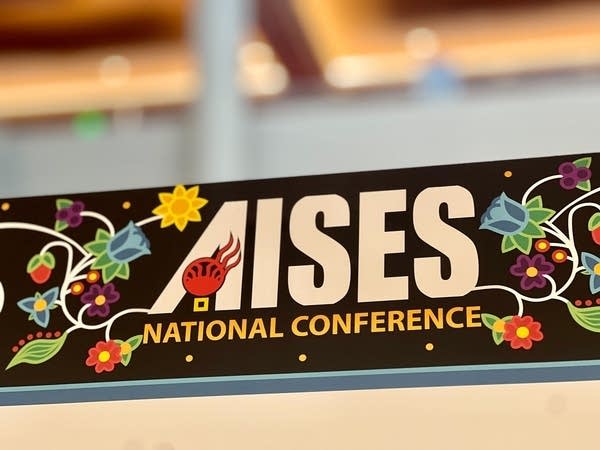
“When people learn that and hear it, that unlocks a lot more potential, because they're saying, ‘My ancestors were scientists. They just weren’t called scientists, but they were. Knowing that they were is literally in my blood, and I can do it.’ I think that's a big message too, that comes from AISES,” Harper said.
He says mindset can make a difference in how people approach the subjects.
“At least try something once, and if it doesn't work out, you know, it doesn't work out. But the worst thing is an opportunity that you've never tried, and you'll never know if you'll succeed or you'll enjoy it,” he said.
The National AISES Conference will be held in Portland, Ore., next year.
Chandra Colvin covers Native American communities in Minnesota for MPR News via Report for America, a national service program that places journalists into local newsrooms to report on undercovered issues and communities.

